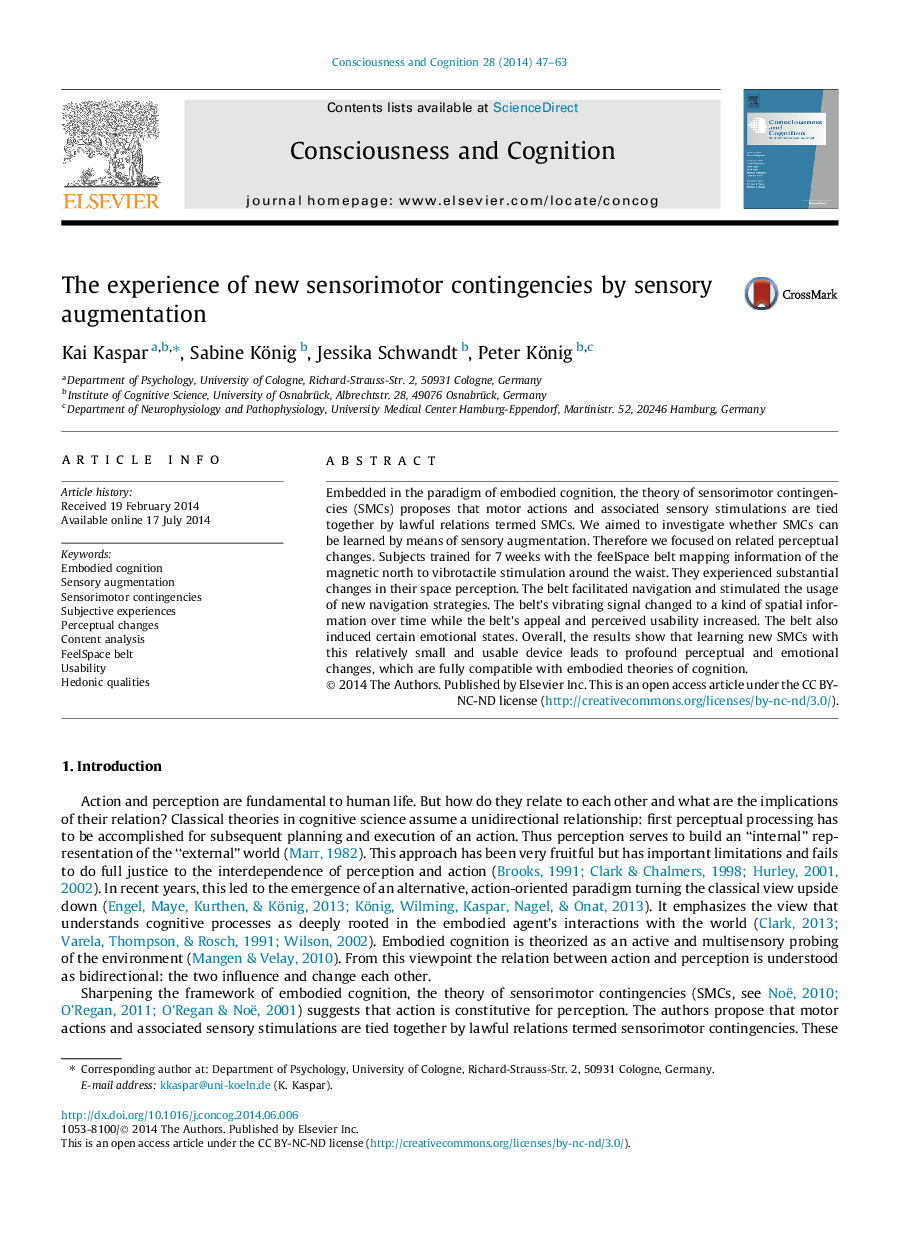| Article ID | Journal | Published Year | Pages | File Type |
|---|---|---|---|---|
| 7289833 | Consciousness and Cognition | 2014 | 17 Pages |
Abstract
Embedded in the paradigm of embodied cognition, the theory of sensorimotor contingencies (SMCs) proposes that motor actions and associated sensory stimulations are tied together by lawful relations termed SMCs. We aimed to investigate whether SMCs can be learned by means of sensory augmentation. Therefore we focused on related perceptual changes. Subjects trained for 7Â weeks with the feelSpace belt mapping information of the magnetic north to vibrotactile stimulation around the waist. They experienced substantial changes in their space perception. The belt facilitated navigation and stimulated the usage of new navigation strategies. The belt's vibrating signal changed to a kind of spatial information over time while the belt's appeal and perceived usability increased. The belt also induced certain emotional states. Overall, the results show that learning new SMCs with this relatively small and usable device leads to profound perceptual and emotional changes, which are fully compatible with embodied theories of cognition.
Keywords
Related Topics
Life Sciences
Neuroscience
Cognitive Neuroscience
Authors
Kai Kaspar, Sabine König, Jessika Schwandt, Peter König,
